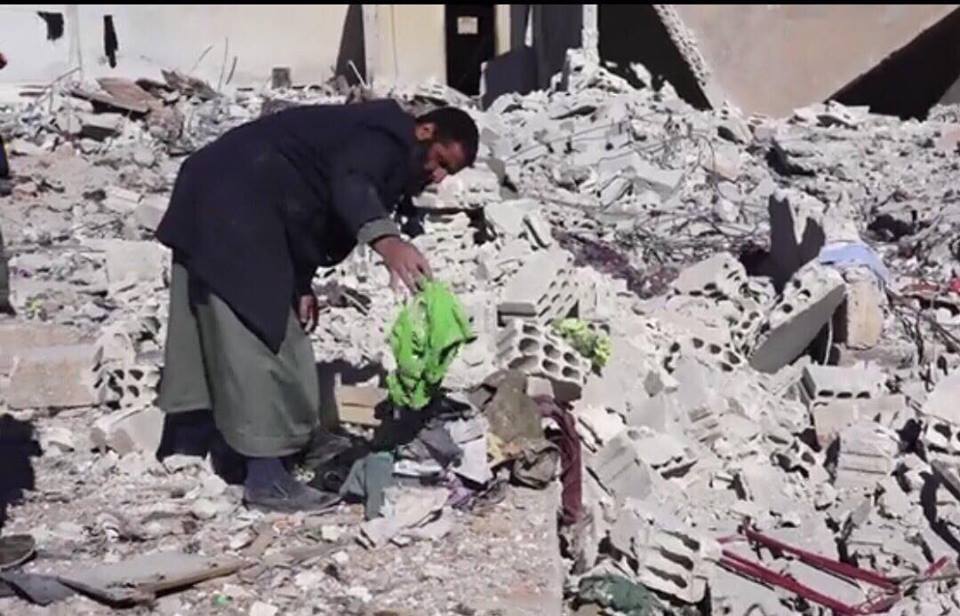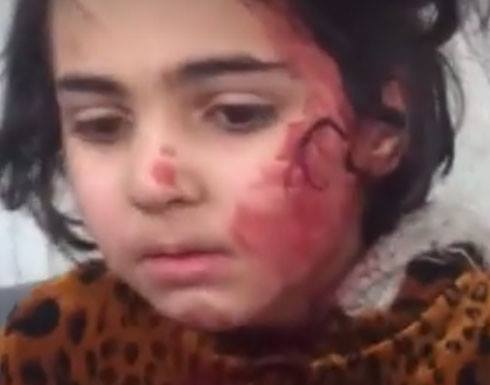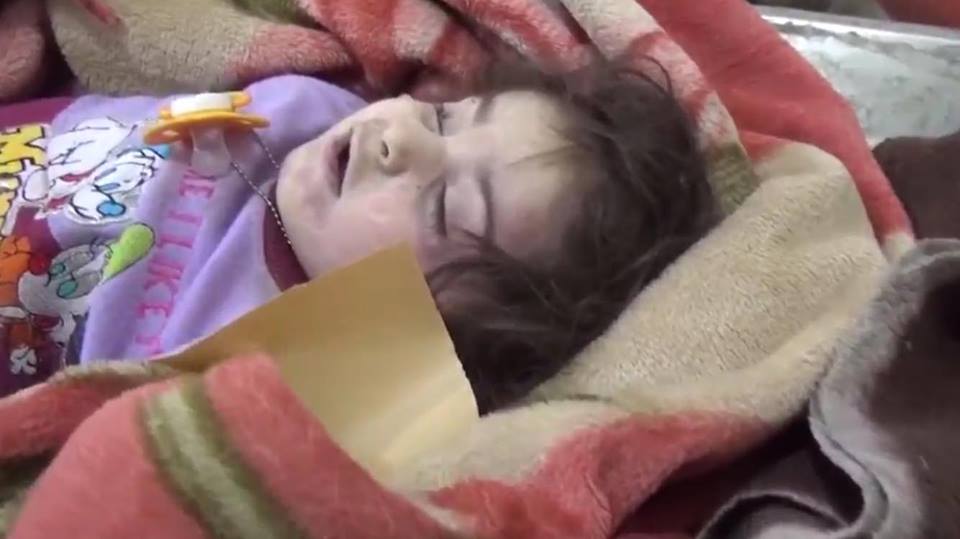Alleged Coalition civilian casualty events continue at record levels – again outpacing Russia’s reported actions in Syria

For the second month, alleged Coalition civilian casualty events in Iraq and Syria exceeded those for Russia in Syria. Overall, Airwars has tracked 88 alleged Coalition incidents for the month – with 534 to 700 claimed non-combatant fatalities. However likely fatalities dropped by more than half from January’s record death toll – mainly as a result of single-source accounts around Mosul and Raqqa. Even so, non-combatants remained at extraordinary risk.
Following the January liberation of East Mosul by Iraqi Security Forces, the operation to oust so-called Islamic State (ISIL) from the west of the city began on February 19th. In Syria meanwhile, Coalition ground proxies the SDF (Syrian Democratic Forces) continued their push to encircle Raqqa. After three months of fighting, Turkish-backed Syrian rebels also retook the key ISIL stronghold of Al Bab in Aleppo governorate.
The Russia-Turkey brokered ceasefire and peace talks continued to have a significant impact on civilian casualties reportedly perpetrated by Russia in Syria. We tracked a similar number of alleged incidents (60) as in January. Despite this relative decline, significant civilian fatalities are still being repoirted from Moscow’s actions.
As of February 28th 2017, 11,286 airstrikes had been carried out in Iraq and 7,397 in Syria since the start of the Coalition campaign. During February, reported actions in Syria were at their highest levels ever with a total of 547 reported strikes – an increase of 2% compared to the previous month. In Iraq, 272 strikes were declared – an increase of 16% over January.
The declared active members of the Coalition (the US, UK, France, Belgium, Denmark, Australia – along with possibly Jordan, Saudi Arabia and the UAE) dropped a total of 3,440 munitions on ISIL targets in February, according to figures published by US Air Force Central Command. This was a 4% decrease over the previous month. In total, 72,771 munitions have so far been released in Coalition airstrikes on Iraq and Syria.
According to official figures provided to Airwars by CENTCOM, in the period from January 30th to February 26th, the US carried out 530 strikes in Syria, or 97% of all Coalition strikes in that country. The remaining members of the alliance conducted just 18 strikes in Syria during the month.
Over the same period there was an increase of 25% in declared US strikes in Iraq, with 174 reported. There was also a smaller increase of 8% in strikes carried out by non-US allies in Iraq, with 68 strikes reported (28% of the total.)

A Royal Australian Air Force F/A-18 Super Hornetis refuels during a mission against ISIL on February 22nd 2017 (USAF/ Staff Sgt. Matthew B. Fredericks)
The operation to liberate West Mosul from ISIL officially began on February 19th, with the UN estimating that up to 750,000 residents remained trapped. Iraqi forces initially advanced into the southwest of Mosul. On February 23rd, they recaptured the city’s airport from ISIL.
The terrorist group continued to be pushed back into the city as Iraqi Security Forces (ISF) and the Federal police progressed northward. Breakthroughs were made in the western outskirts of the city as Iraqi forces advanced on Badush Prison. However, they met with increased resistance from ISIL as they moved into more densely-packed urban areas.
Meanwhile Syrian Democratic Forces (SDF) continued their efforts – supported by heavy Coalition strikes – to encircle Raqqa. As we detail below, significant civilian fatalities continue to be reported from these operations.
On February 23rd, following more than three months of fighting, Turkish-backed Syrian rebels recaptured central Al Bab from ISIL. However as previously reported by Airwars, this key win came at a significant cost to civilians, with more than 300 non-combatants likely killed between December 2016 and February 2017, according to figures provided to Airwars by the UN’s human rights office. Local monitors including the Syrian Observatory have placed the civilian toll from Turkish actions at over 500 killed.
if(“undefined”==typeof window.datawrapper)window.datawrapper={};window.datawrapper[“ykgnf”]={},window.datawrapper[“ykgnf”].embedDeltas={“100″:1080,”200″:845,”300″:789,”400″:748,”500″:748,”600″:733,”700″:707,”800″:707,”900″:707,”1000”:707},window.datawrapper[“ykgnf”].iframe=document.getElementById(“datawrapper-chart-ykgnf”),window.datawrapper[“ykgnf”].iframe.style.height=window.datawrapper[“ykgnf”].embedDeltas[Math.min(1e3,Math.max(100*Math.floor(window.datawrapper[“ykgnf”].iframe.offsetWidth/100),100))]+”px”,window.addEventListener(“message”,function(a){if(“undefined”!=typeof a.data[“datawrapper-height”])for(var b in a.data[“datawrapper-height”])if(“ykgnf”==b)window.datawrapper[“ykgnf”].iframe.style.height=a.data[“datawrapper-height”][b]+”px”});
In February, the minimum estimated number of civilian fatalities likely caused by the Coalition dropped by more than half from January’s record toll – though with both the Mosul and Raqqa campaigns ongoing, deaths remained at an alarming level.
Across Iraq and Syria, Airwars tracked 88 incidents of concern allegedly involving Coalition aircraft – a small decrease from the record number of 99 claimed incidents tracked during January. A total of 534 to 700 civilians were allegedly killed in these February casualty events.
Moreover the continued slowdown of Russia’s strikes in Syria meant that for the second month in a row, alleged civilian casualty incidents attributed to the US-led Coalition in Iraq and Syria outweighed those reportedly carried out by Moscow in Syria.
Of these 88 events attributed to the Coalition, Airwars has assessed 23 of them as fairly reported – meaning that an incident has two or more credible sources, and with Coalition airstrikes also declared in the near vicinity. Between 110 and 118 non-combatants are currently assessed as likely having died in these events – down from 265 likely non-combatant deaths the previous month.
This significant drop in the number of fairly reported deaths coincided with a sharp rise in the number of events Airwars assessed as being poorly reported. These are incidents which have only one source, frequently offering little detail. Overall, 39% of all incidents across Iraq and Syria were poorly reported events in February. This is the greatest number of such incidents we’ve seen since the start of the war, and may reflect the chaotic late stages of the conflict against ISIL.
Furthermore, as in January a large proportion of incidents (33%) – accounting for at least 320 deaths – were contested. Conflicting reports often blamed the Coalition and other parties, including the Assad regime, Iraqi forces, ISIL, Russia and Turkey – testament to the complexity of the conflicts in both countries.
Non-combatant fatalities likely caused by the Coalition in Syria in February fell by 42% from the previous month. Overall, we tracked 15 incidents assessed as ‘fair’. Across these events between 48 and 54 non-combatants were likely killed by Coalition aircraft – compared to between 65 and 142 such deaths in January.
The lower proportion of deaths graded as ‘fair’, however, was affected by a record number of poorly reported incidents across the country. Some 46% of all alleged events in Syria – killing at least 70 civilians – consisted of single-source reports.
“Continuing the trend we saw in January, allegations of civilian casualties resulting from Coalition actions have been much higher than expected” says Kinda Haddad, head of the Airwars Syria team. “However, as these alleged events take place in ISIL-controlled territory where there is often an information blackout, a large proportion of these allegations are poorly reported or single source.
“The month also saw a higher than usual number of contested events for both Russia and Turkey – and it is becoming harder and harder to distinguish between the various belligerents,” saysHaddad.
if(“undefined”==typeof window.datawrapper)window.datawrapper={};window.datawrapper[“i8SBd”]={},window.datawrapper[“i8SBd”].embedDeltas={“100″:641,”200″:440,”300″:373,”400″:332,”500″:306,”600″:291,”700″:291,”800″:291,”900″:291,”1000”:265},window.datawrapper[“i8SBd”].iframe=document.getElementById(“datawrapper-chart-i8SBd”),window.datawrapper[“i8SBd”].iframe.style.height=window.datawrapper[“i8SBd”].embedDeltas[Math.min(1e3,Math.max(100*Math.floor(window.datawrapper[“i8SBd”].iframe.offsetWidth/100),100))]+”px”,window.addEventListener(“message”,function(a){if(“undefined”!=typeof a.data[“datawrapper-height”])for(var b in a.data[“datawrapper-height”])if(“i8SBd”==b)window.datawrapper[“i8SBd”].iframe.style.height=a.data[“datawrapper-height”][b]+”px”});
Of the 15 casualty incidents so far believed to have likely carried out by the Coalition in Syria, 80% of them were around Raqqa, where civilians remain in extreme danger. Airwars has assessed the death toll from these events at between 45 and 51 non-combatants, with at least 37 more wounded. At least 64 more civilians allegedly died in a further 26 poorly reported events in Raqqa governorate.
“Again in Raqqa there has been a certain level of confusion between the Coalition, Russia and the Assad regime,” explains Kinda Haddad, “But this was much less than the confusion between Russia and the regime in the opposition held areas.”
Airwars recorded a significant increase in incidents of concern in Raqqa during the month. Between February 20th and 28th alone, we tracked 21 separate alleged events in the governorate.
On February 21st for example, we tracked five incidents which likely killed a minimum of 16 civilians (including three children) with at least eight others wounded. As in January, we saw the deaths of entire families – many of whom local sources were able to name.
Up to nine non-combatants including three children died in an alleged Coalition airstrike on the village of Al Sahamiya, Raqqa according to local media. Raqqa is Being Slaughtered Silently named the victims as “Hamadi Saleh al Baladiya, his wife, his children, the mother of his wife, her two brothers and her sister.” The Syrian Network for Human Rights was among other sources blaming the Coalition – putting the death toll at a minimum of five, including three children and one woman.
On the same day (February 21st) a reported Coalition raid on Maadan town in the Raqqa countryside led to the death of eleven members of “the family of Satif Husssein al Suwairi,” according to Raqqa is Being Slaughtered and the Violations Documentation Center.
Throughout February the town of Al Tabaqa was particularly badly hit. In total, our researchers tracked nine incidents in the town – 40% of all such incidents in Al Tabaqa throughout the 31-month war. Of these nine incidents, five were assessed as likely being carried out by the Coalition. A minimum of 13 civilians died with 13 more wounded.
On February 25th for example, we received multiple reports of three events in Al Tabaqa – two of which we assessed as being likely caused by Coalition jets.
According to Micro Syria, “Coalition warplanes targeted a car park in Tabaqa and according to a source in the national hospital in the town, a civilian was killed and five others wounded – some of them critically.” Shaam News also reported a “likely” Coalition strike on the parking area of the hospital.

Destruction in al Tabaqa on February 4th 2017, following a reported Coalition raid (via Raqqa is Being Slaughtered)
The liberation of East Mosul in January led to a significant – though temporary – decrease in non-combatant deaths across Iraq in February as Iraqi Security Forces regrouped and readied themselves for the forthcoming assault on West Mosul.
Overall, we presently assess eight civilian casualty events for Iraq in February as having likely carried out by the Coalition – a 62% decrease on the 21 claims tracked in January. Between 62 and 64 non-combatants were likely killed in these incidents and up to 88 injured – compared to the record death toll of 189 to 227 seen the previous month. As reported elsewhere by Airwars, this lull preceded significant civilian casualties in early March, with hundreds of non-combatants reported killed as the battle to liberate West Mosul intensified.
As in Syria however, the month saw a high proportion of contested incidents in Iraq – with eleven reported events allegedly killing at least 218 civilians. Reports on these events often conflicted, with sources blaming Iraqi government forces and/or ISIL – along with the Coalition. It was frequently impossible to determine who was responsible, even when there was little doubt that civilians had died.
“Iraqi forces stopped their operations after they liberated the left side of Mosul,” explains Airwars’ Iraqi researcher. “They had to reorganize themselves for five weeks which meant that there were few Coalition airstrikes supporting them from the fourth week of January until February 19th – the beginning of the offensive to liberate the right side of the city. This led to a reduction in incidents which we assessed as likely carried out by the Coalition.”
But in the weeks leading up to the official start of the operation to liberate West Mosul, there were still major incidents of concern. On February 14th, in the al-Matahin neighbourhood of Mosul, up to 16 civilians died in an alleged Coalition strike on the ‘Aeklat’ flour mill on the right hand side of the city according to local sources.
Iraqi Spring said the strikes occurred close to the Sham gate, while Ajel Al Mosul reported that the “airstrikes targeted a house near a flour mill, killing 14 civilians who has no links to Daesh.” In a later report Ajel Al Mosul named three child victims as Dalal Ayman Ahmed (five-years-old), Amina Ayman Ahmed (three-years-old) and 16-year-old Hussein Ali Khadr.
The UK reported carrying out a strike on an ISIL headquarters in north-western Mosul on February 14th, a day on which civilian casualties were reported in West Mosul.
Just a few days later on February 17th-18th – in a strike which the Coalition subsequently confirmed carrying out – up to 18 non-combatants died and 47 more were wounded in a raid on the Al Jumhuri medical complex in western Mosul, according to some local reports.
The Coalition stated it had struck an “ISIS command and control headquarters and propaganda facility in western Mosul”, but said there were no civilian casualties. However, both Iraqi Spring Media and Raedlay later reported the death of 47 non-combatants, while the Al Rafidain Channel posted a graphic video showing the aftermath of the strike, including footage of a dying child.

Islamic State propaganda claims 18 civilians died and 47 are injured in a confirmed Coalition strike on a hospital complex, February 17th 2017
In total, the Coalition reported 137 strikes in Mosul during February – a marginal increase of 5% over January. Yet the tempo of strikes increased dramatically after February 19th, with 39% of all strikes declared in thye city occurring during the last week of the month. The resulting impact on civilians was immediate.
Between February 20th-21st in possibly the deadliest two days of the month, local media reported that 89 civilians including 32 children died and 134 others were wounded in Coalition strikes and artillery shelling over a 72 hour period in West Mosul. Adding those numbers to recent incidents on Mosul, Yaqein stated that “the death toll and number of wounded from military actions (government and international) on the right side of Mosul in Nineveh province, which started its operations around three days ago, rose to more than 220 civilians.”

Iraqi Spring Media published an image of an injured child on February 21st, reporting that in the last 72 hours some 89 civilians including 32 children had died, and 134 were injured, in airstrikes and artillery shelling in West Mosul.
Just three days later, on February 23rd – a day on which the Coalition publicly reported six strikes on 95 targets in the city – local press reported that four non-combatants died and up to 16 were wounded when the Coalition allegedly targeted a residential building in the Mosul al-Jadid (New Mosul) neighbourhood. While Iraqi Spring – which shared images depicting widespread destruction – referred to “Coalition” raids, other sources pointed to the US more specifically. Chillingly, Iraqi Spring Media apologised “for not showing all photos as they are too shocking”.
In the last three days of the month, Airwars saw an alarming increase in both reported casualty incidents and the death toll. Between February 25th and 28th, our researcher tracked five events across multiple neighbourhoods on the right side of Mosul, in which at least 85 non-combatants were claimed killed. While reports were conflicting – attributing deaths to both the Coalition and Iraqi government forces – one thing was clear: by the end of the month, as the momentum of the Coalition-backed campaign increased, the risks to civilians in West Mosul had multiplied.

A young girl allegedly killed or wounded in Coalition airstrikes on New Mosul neighbourhood (via Iraqi Spring Media Center)
As in January, the ongoing Syrian ceasefire continued to have a relatively positive impact on civilian casualties attributed to Moscow during February – though there were still reports of violations on both sides.
Overall, there were 60 claimed incidents of concern allegedly involving Russian warplanes during the month – a minor increase from the 57 such events tracked during January.
Though it will be some time before Airwars can fully assess the allegations, between 165 and 292 non-combatants are alleged to have died in these 60 events. However those figures are unvetted and unfiltered, and should not be directly compared to the Coalition numbers in this report.
“In the context of the ceasefire and the ongoing talks in Astana during February, Russian allegations continued to be relatively lower than expected as they were in January,” says Kinda Haddad. “A large proportion of the alleged incidents were also contested between the regime and Russia.”
For the second consecutive month, there were more incidents of concern reportedly carried out by the Coalition in Iraq and Syria, than by Russia in Syria.
As the US-led Mosul and Raqqa campaigns continue to accelerate while Russia’s own actions in Syria plateau, the gap between deaths attributed to Russian forces and those blamed on the Coalition is narrowing. With hundreds of civilians already claimed killed from Coalition strikes in Mosul just days into March, this emerging trend could well continue.
Airwars research team: Kinda Haddad, Latif Habib, Abdulwahab Tahhan, Eline Westra, Christiaan Triebert, Poppy Bowers, Samuel Oakford and Chris Woods